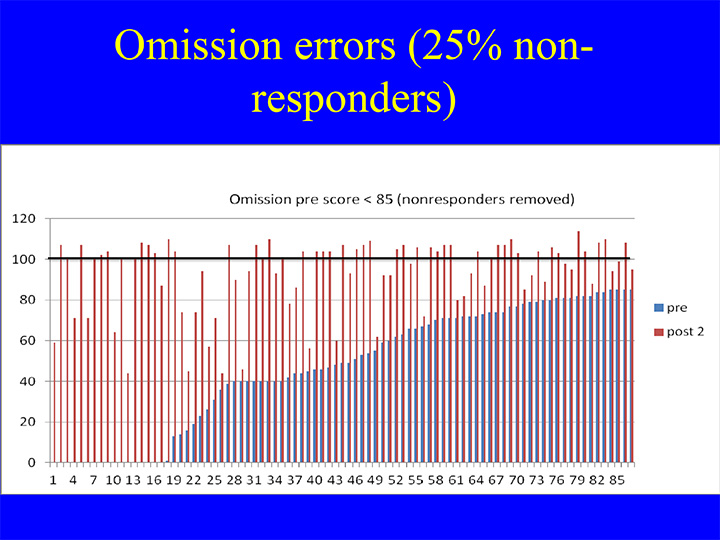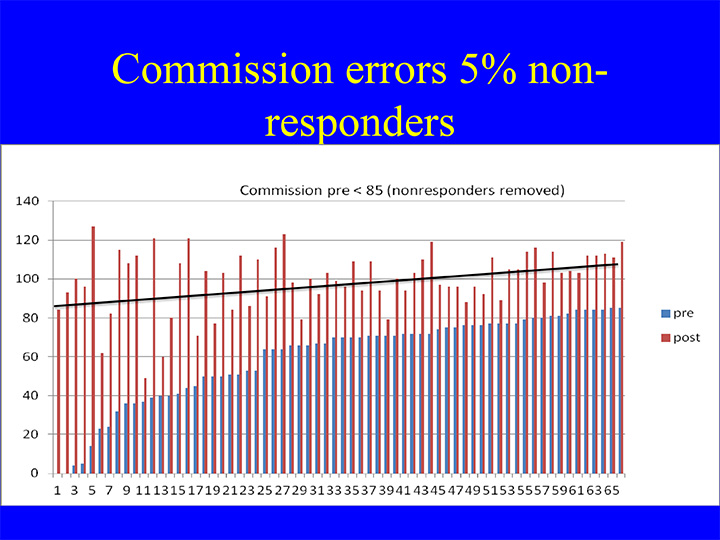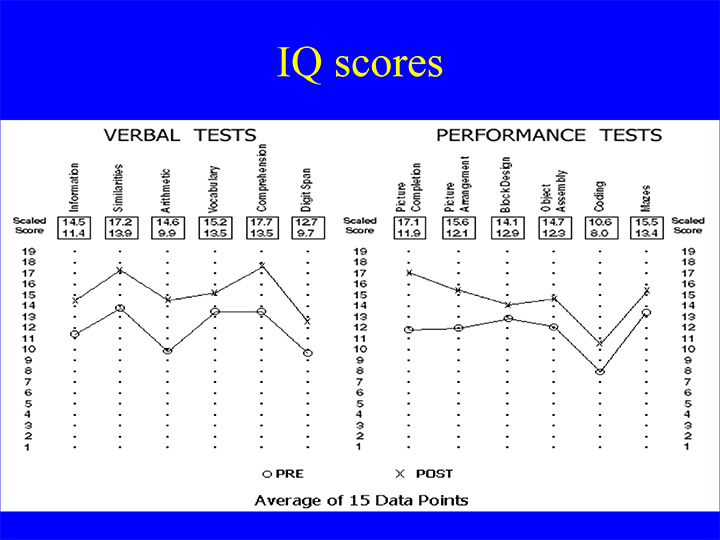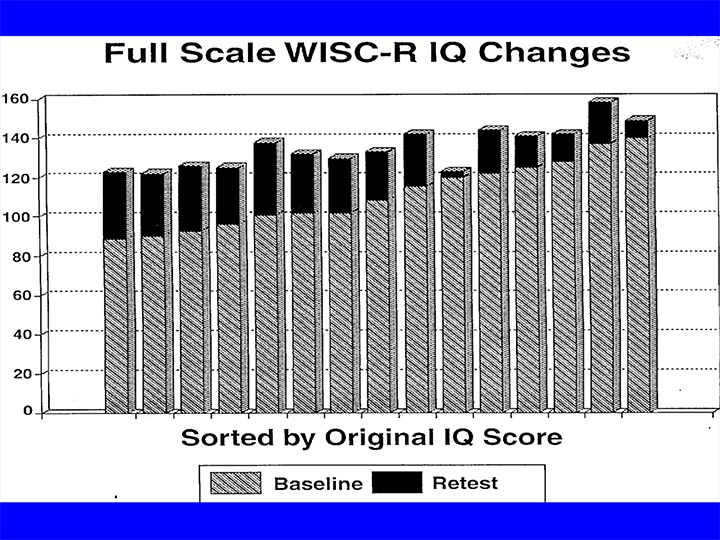Neurofeedback and Cognitive Skills Training
by Siegfried Othmer | March 16th, 2016By Siegfried Othmer, PhD
 In the previous newsletter on this topic we supported the case for cognitive skills training as a sister technology to neurofeedback, and we disparaged the case that the FTC has been making against Lumosity in particular. But how does cognitive skills training actually stack up against neurofeedback? This is a useful discussion to be had.
In the previous newsletter on this topic we supported the case for cognitive skills training as a sister technology to neurofeedback, and we disparaged the case that the FTC has been making against Lumosity in particular. But how does cognitive skills training actually stack up against neurofeedback? This is a useful discussion to be had.
Whereas there is no doubt at all that cognitive skills training can be beneficial, it is also true that the benefits of the training are often modest, and the training takes effort. And on the other hand, we are aware that high levels of mental performance don’t usually require a lot of effort. We’ve all known students in school who didn’t have to work all that hard in order to stand out academically. Superior academic performance came quite easily for them. If they worked hard on something it was because their interest drove the agenda, not because they wanted to hone their mental skills.
It is one of the essential unfairnesses of life that the competent brain is also the brain at ease. It isn’t working hard. In fact the brain is incapable of ‘working hard’ in the usual sense. It cannot readily be pushed into working harder or faster. It can however, be trained to work better by means of cognitive skills training or neurofeedback, and that can make all the difference. Surprisingly the gains achieved with neurofeedback training are available without a lot of effort on the part of the trainee. Moreover, the gains to be achieved aren’t readily predictable on the basis of the starting point.
This can be most readily illustrated with our popular test instrument, the QIK CPT (Continuous Performance Test). In Figure 1, we show the pre-post results for a cohort of trainees at the EEG Institute for the attention measure. The data are plotted in the order of starting value. Those scoring above the line have reached the highest achievable score, which applies to the case of zero omission errors. Observe that the likelihood of reaching the top score is not significantly correlated with the starting value.

Figure 1. Pre-post change in the standard score for omission errors in a 21-minute Continuous Performance Test (CPT), for nominally twenty sessions of Infra-Low Frequency Neurofeedback. Data are plotted in rank-ordered fashion according to starting value. Values above 100 indicate saturation at zero omission errors. Observe that the probability of reaching such saturation is not strongly dependent on the starting value. Non-responders were excluded from the plot for reasons of visual clarity. Non-responders were 25% of the population.
This is utterly remarkable. The performance prior to neurofeedback gives us very little hint about the person’s intrinsic functional capacity. The same holds true for impulsivity, as indexed by commission errors. This is shown in Figure 2. The pre-test score is not a good predictor of the post-training score.

Figure 2. Pre-post change in standard score for commission errors upon twenty sessions of Infra-Low Frequency Training. The data have been plotted in rank-ordered fashion according to starting value. Observe that the indicated recovery reveals only a modest dependence on starting value. Non-responders were excluded from the plot for reasons of visual clarity. They amounted to 5% of the sample.
All this is very different. I suspect, from the situation that prevails in cognitive skills training. In those situations, the potential for functional improvement is typically significantly correlated with the initial value. People don’t expect miracles, and they don’t usually get them. On the other hand, the correlation is not so strong that we can predict outcomes there either.
The difference between the two situations calls for an explanation. My own view is that the difference is traceable to a what makes the two situations different—the presence or absence of efforting. Cognitive skills training consists of overt challenges that commit the neural networks to a particular configuration. Even if that configuration happens to be dysfunctional, it is still the starting point for the exercise. The result is that the brain has to work its way out of the dysfunctional status. But it has to do so under circumstances where its “freedom of action,” the scope of its intrinsic plasticity, is possibly constrained by the act of managing the challenge itself.
So what’s different in neurofeedback? Here the entire focus is self-regulation per se rather than an external challenge. The feedback signal informs the brain as to its status, and the brain utilizes this information to its own betterment. It is not otherwise constrained, so there is better access to the prevailing brain plasticity. It may be the de-stressed, uncommitted brain that has the greatest latitude for functional re-alignment. At least that is a decent working hypothesis. In the case of infra-low frequency training, we are also working at a much more foundational level with respect to the regulatory hierarchy. The assumption here is that if the brain gets better organized at the foundational level, then even higher cognitive function benefits. This is likewise still only a hypothesis, although clinical evidence in its favor is piling up.
Just how well do we do with cognitive skills using neurofeedback? As it happens, IQ tests consist of a selection of the most informative cognitive challenges that mutually complement each other. So for present purposes we recall the WISC-R IQ measurements we reported back in 1991 on a cohort of 15 ADHD kids who underwent the neurofeedback training at that time. The results are shown in Figure 3. Every test category showed significant gains, and yet the trainees were not “doing anything”—-except for gazing at the EEG-derived signal and wanting a rocket to speed up or a Pacman puck to keep moving. Their cognitive gains were essentially free. They were not contingent on the execution of any particular challenge.

Figure 3. Pre-Post Wechsler IQ data after SMR-beta training of a cohort of 15 children with attentional and behavioral problems. These results were obtained in the 1990-1 timeframe.
The gains in IQ score made by the fifteen participants is shown in Figure 4, here plotted in rank-ordered fashion. The average gain in IQ score was 23, and all those who started the training with measured IQs of 100 or under gained at least thirty points. I have not heard of such gains being achieved with cognitive skills training. If they were, then Lumosity surely would not have ended up with that $2M fine.

Figure 4. Pre-post data for the Wechsler Full Scale IQ from Figure 3, plotted in rank-ordered fashion according to starting value. The changes were significant in all but one case.
These data speak volumes. Progress was made more readily by “unburdening” the brain rather than by “challenging” the brain. The secret of success lay in removing constraints rather than in applying them (by way of challenges). The brain was able to migrate into a more functional configuration solely on the basis of feedback, in the absence of any overt or exceptional cognitive challenge.
So this finding reveals yet another one of the unfairnesses of this existence. The achievement of good brain function is not contingent on efforting. It is contingent only on information—-and a situation conducive to the learning experience. In this project we seem to be unable to help our own cause with efforting and determination. All that is required of us is to devote ourselves to the training experience. Then we get whatever we get.
This observation has more general applicability. It is simply wrong-headed to confront learning disabilities head-on with direct challenges to the dysfunction. One should instead finesse the problem with neurofeedback. The principal pioneer in this area is Kirt Thornton, who has produced voluminous evidence that none of the prevailing techniques of remediation come anywhere close to neurofeedback in effecting recoveries in learning disabled children. Similarly, in the emotional realm it is a mistake to subject a PTSD client to exposure therapy when the whole issue of PTSD can be simply resolved with neurofeedback. No re-experiencing is necessary at all.
Given the above, we have an extraordinary opportunity here to give children a better start in life with more highly functional brains. The net cost to society should be zero, because the costs could all be covered out of the budget for learning disabled children that we would no longer need. In this project, one could utilize not only neurofeedback but cognitive skills training as well. Both make their particular contributions to overall functionality.






Dr Othmer?
Are you saying that brain training by Lumosity doesn’t work or that it isn’t very effective?
I think it is possible that brain training at first would take effort. But with practice, a skill that one learns would be usable without much effort. It is like someone who strength trains. At first lifting heavy objects takes work. But as the muscles get stronger, the extra weight isn’t hard to lift.
Does my argument make sense?
James Novack
I certainly recognize the value of cognitive skills training, and have done so for many years. With the availability of neurofeedback, however, in an ideal world someone would do that prior to undertaking cognitive skills training. Most likely it will give them a much better starting point for the training. Of course we are not in an ideal world, and cognitive skills training is much more accessible to people and probably more affordable as well. Nevertheless, the objective should be clear. Since we do not know, and cannot now predict, how well someone will perform after neurofeedback training, it ought to be available for every school child. Then all the other challenges that the person faces, including cognitive skills training, will go much better.
As to your point that the training is likely to get easier as skills develop, it would seem to me that it is just as likely that folks will simply work at a higher level–but will work just as hard as is customary for them. And they will be just as disappointed by their failures as before. Expectations will simply ratchet up with their performance level.